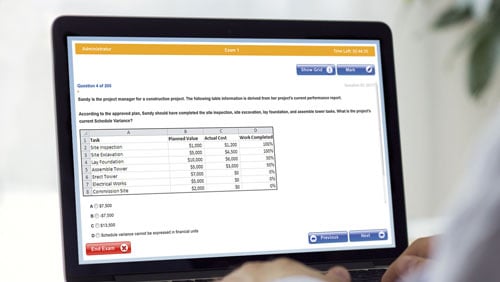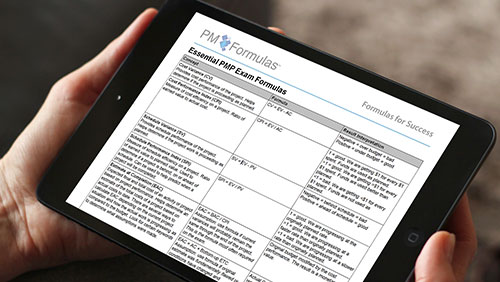An Overview of The Guide
Contents- 1. Why was the Guide Created?
- 2. What is Inside the Guide?
- 3. What Versions of the Guide are there?
- 4. What Knowledge Areas and Process Groups are in The Guide?
- 5. Is the Guide a Project Management Methodology?
- 6. How DO Guide and PMP Exam Relate to each Other?
- 7. Do I have to Read the Guide for my PMP Exam?

- 1. Why was the Guide Created?
- 2. What is Inside the Guide?
- 3. What Versions of the Guide are there?
- 4. What Knowledge Areas and Process Groups are in The Guide?
- 5. Is the Guide a Project Management Methodology?
- 6. How DO Guide and PMP Exam Relate to each Other?
- 7. Do I have to Read the Guide for my PMP Exam?
Why was the Guide Created?
The A Guide to the Project Management Body of Knowledge (PMBOK® Guide) resulted from the concept of a small group of people who wanted to form an organization for promoting the discipline of project management. Edward Engman, J. Gordon Davis, James Snyder, Eric Jenett, and Susan Gallagher founded the Project Management Institute (PMI®) in October of 1969 in Atlanta, Georgia. The membership of the PMI® has grown from that small core of founders to more than 250,000 members worldwide in 2009.
The first Project Management Professional certification exam was held in 1984 when PMI® membership passed the 5,000 member milestone. The exam was taken by 55 applicants, resulting in 43 passes. The Project Management Professional (PMP)® is a knowledge and experience based certification that has an ISO 9001 Quality certification. It has become the most sought after, valuable project management credential in the world.
What is Inside the Guide?
Realizing that project management needed a definitive guide to the processes and knowledge areas needed for successful project management the PMI® completed the first draft of the PMBOK® Guide in 1986 to help their members in studying and passing the Project Manager exam. It uses a variation of the Deming Cycle, a logical sequence of four repetitive steps, for continuous improvement with a five-step lifecycle. These five steps are the five major processes of Project Management. Thinking back to the organization's founding 1969, the same year that the Eagle landed in our moon's Sea of Tranquility, proved to be an inspiration for the PMI. The group used many of the techniques, methods and tools for project management that were developed for the space program. The five charter members of PMI® formed much of the body of knowledge contained in the PMBOK® Guide from this program. So when someone remarks that Project Management isn't rocket science you can smile and correct them!
What Versions of the Guide are there?
The PMBOK® Guide became an American National Standards Institute (ANSI) standard in 1991 and the first edition was published in 1994. It is also recognized as a standard by the Institute of Electrical and Electronics Engineers, known as IEEE. As the membership of PMI grew, they realized some revisions were in order so in 1996 the guide was brought up to date. This version was based on comments the PMI® received from its members. In 2004, a third edition of the PMBOK® Guide was published and contained improvements in the document's structure as well as additions to processes. The latest edition, the fifth edition, was published in December 2012.
What Knowledge Areas and Process Groups are in The Guide?
The PMBOK® Guide divides project management into ten knowledge areas: Project Management Integration; Project Scope Management; Project Time Management; Project Cost Management; Project Quality Management; Project Human Resource Management; Project Communications Management; Project Risk Management; Project Procurement Management and Project Stakeholder Management. We also recognize the five process groups of Initiating, Planning, Executing, Monitoring/Controlling and Closing. By applying the five process groups to every knowledge area, a project is managed efficiently and consistently.
In addition, the PMBOK® Guide offers hundreds of key definitions, 42 Project Management sub processes, almost 600 Inputs, Tools & Techniques and Outputs as well as 32 pages of glossary. It is a treasure trove of information, meant to be both a study guide for CAPM®/PMP® students and a reference for project managers around the world. Once a candidate passes the PMP® Exam they find the guide an invaluable resource throughout their career. As a member of PMI®, you can get a copy of it free of charge or you can purchase one at http://www.pm-prepcast.com/pmbok.html
Is the Guide a Project Management Methodology?
It is important to note that the PMBOK® Guide is not a project management methodology but a framework for organizing and executing a project. It is a foundational reference that is neither complete nor all-inclusive. It is meant to provide a support system for different methodologies and offer tools and techniques to manage a project to its successful conclusion.
The PMBOK® Guide is used in engineering projects, healthcare, banking, information technology, product development, and government programs to name just a few. Many large companies that produce consumer goods use it as a guide in developing and marketing new products.
How DO Guide and PMP Exam Relate to each Other?
Approximately 75% of the PMP certification exam consists of questions directly related to the PMBOK® Guide. The PMBOK® Guide accounts for 100% of the Certified Associate in Project Management (CAPM)® questions. One very important piece of information to memorize is table 3-1 in Chapter 3, entitled Project Management Processes for a Project. You should know this table by heart, not only for the exam but for future working reference.
Do I have to Read the Guide for my PMP Exam?
The PMBOK® Guide is a very comprehensive guide to the building blocks you need to know to be a successful Project Management Professional. It's recommended that you read it at least twice before taking the PMP Exam.
Watch this YouTube video for an overview of the PMBOK® Guide:


